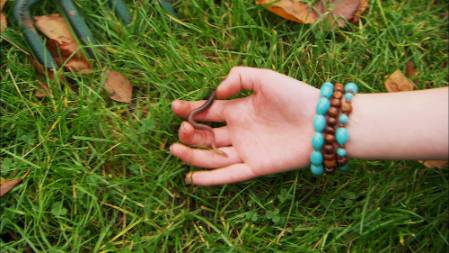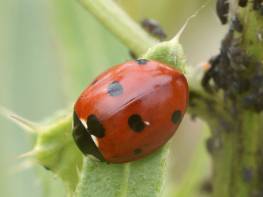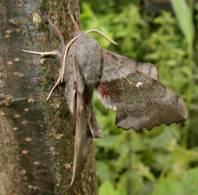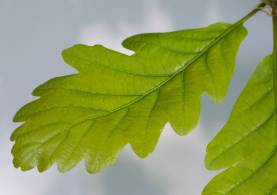There's no doubt about it, when you join us for our Big Nature Day extravaganza this Sunday on 22 May, you'll get your hands dirty.
But that's pretty essential if you're going to help our scientists and wildlife experts in the Big Nature Count to find and identify how many different species of plant and animal there are in our Museum Wildlife Garden. It's a 24-hour census - or a bioblitz race for those familiar with the term - to celebrate International Day for Biological Diversity and International Year of Forests, as well as the start of the UN's Decade on Biodiversity.

Can you handle it? Find out which worm charmer to be on Big Nature Day with our experts in the BBC film clip on our website
As Stuart HIne, manager of our Centre for UK Biodiversity says: 'We have many visitors to the Wildlife Garden, from our regular human ones to more unusual visitors such as honeybees, damselflies and hawkmoths. In fact, since the garden opened in 1995, we’ve recorded more than 2,000 different species and it would be great to know what's about on Sunday.'
Along with the regular Big Nature Count guided tours, worm charming (above) will be a popular highlight of the day. There are two sessions at 12.00 and 15.00. The recent rain should help lure the worms to the ground's surface. Although we're hoping that the sun will shine gloriously on the day, of course.
Spot the spots on the ladybirds you find and watch out for cockchafer May bugs on the Big Nature Count guided tours. Select images to enlarge
Other garden action includes the Bugs Count, Tree Hunt, moth trap checking, investigating pond life, and check out the Bee Tree.
Inside the Darwin Centre, head over to the Specimen Roadshow to identify your favourite specimens (or bring in a picture) and there are nature talks in the Darwin Centre's Attenborough Studio.
Look around and above, plants and trees may hide moths (like this Poplar hawkmoth, left) and butterflies. There are eight common trees in the Wildlife Garden to identify. Select images to enlarge
Take pictures on the day
Most important of all, though, bring your cameras or have your mobile phone to the ready to snap the species you do manage to spot. With these, you can help us create a spectacular Photo Wall in the Darwin Centre atrium at the Interactive Media area. You can print your pictures here for the display or upload them with your comments to our Big Nature Day guestbook on the computers available or at home afterwards.
Big Nature Day is a free, drop-in event that will appeal to all ages, but you'll need to book on the tours and worm charming sessions.
When you arrive at the Museum head for the West lawn or Darwin Centre atrium where you'll be directed to the Base Camp in the Darwin Centre Courtyard, the hub for the day's activities, and where you can see lots of special displays.
Keep up to date on our Big Nature Day website for the Big Nature Count tours schedule and latest information
Explore the Museum's Wildlife Garden
Discover what else is on for the International Year of Biodiversity
Visit our newly-launched Decade on Biodiversity website
Yann Arthus-Bertrand film treats at the French Institute on 22 May and on the International Year of Forests website
If you want to see an amazing nature documentary by The Earth From Above photographer Yann Arthus-Bertrand, head over to the nearby French Institute for a special free screening of Home at 18.30. Our Museum botanist Sandy Knap is introducing the film. Although it's free you need to book a place on their website.
Find out about booking for the special screening of Home at the French Institute
You can also catch a glimpse of Yann's special short fiilm for the International Year of Forests on the official website








